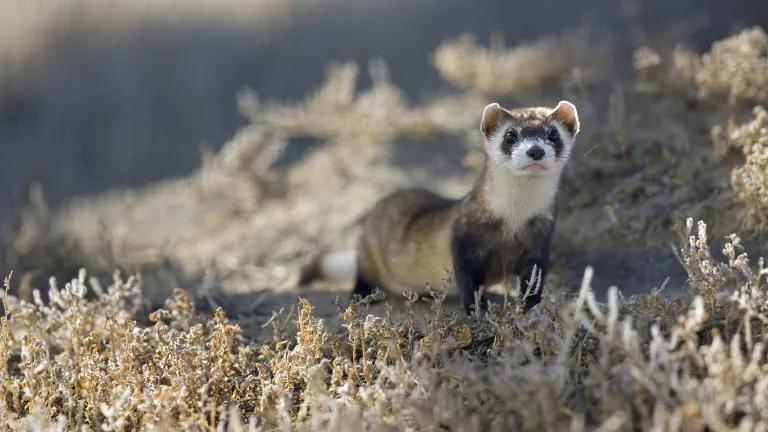NRDC Sues to Protect Habitat for Endangered Bumblebee

The Interior Department should’ve designated critical habitat for the rusty patched bumblebee—a year ago.
NRDC sued the U.S. Department of the Interior today for violating the Endangered Species Act by failing to designate critical habitat for the rusty patched bumblebee more than a year after the species was put on the Endangered Species list. The agency’s lack of follow-through “leaves this highly endangered bee’s habitat at risk of destruction and decreases the species’ chance for survival,” says Rebecca Riley, legal director of the Nature program at NRDC.
Once common throughout the Midwest and Northeast, the rusty patched bumblebee saw a rapid decline in numbers in the mid-1990s, thanks to habitat loss, pesticide use, climate change, and disease. In January 2017—after an NRDC lawsuit forced the Trump administration to end its illegal freeze of protections for the rusty patched bumblebee—the Interior Department officially listed the species as endangered. But the agency concluded that it couldn’t determine the bee’s critical habitat, which would allow the species to recover with minimal human disturbance. In such a case, the Endangered Species Act requires that the Interior designate critical habitat within one year of the publication of the listing, based on the best available data, but the agency failed to do so.
The lawsuit comes on the heels of wide-reaching rollbacks by the Interior Department aimed at weakening the Endangered Species Act. A recent report by the Endangered Species Coalition found that the rusty patched bumblebee is among the 10 species most threatened by these efforts. “Limiting [the rusty patched bumblebee] to just a tiny sliver of the habitat where they once thrived not only limits the likelihood that the bees persist,” said Daniel Raichel, a staff attorney for the Pollinator Initiative at NRDC. “It also fails to live up to the obligations of the Endangered Species Act.”



